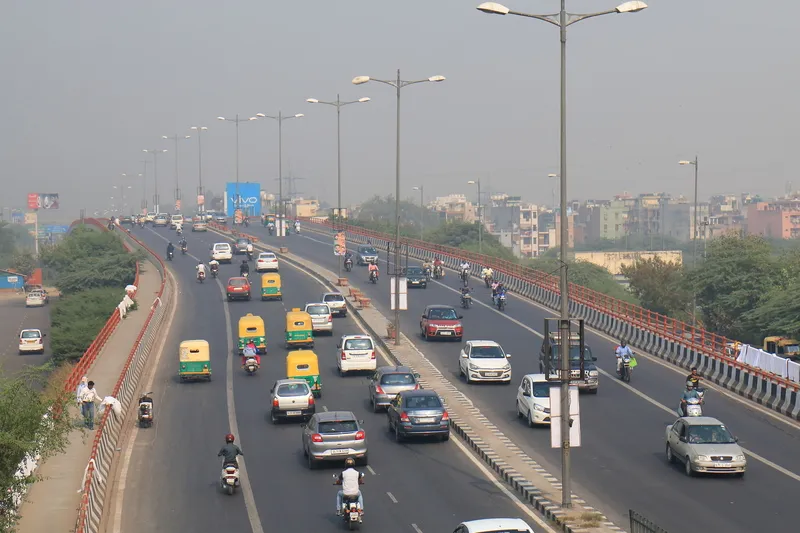New analysis from Frost & Sullivan, New Mega Trends in China: Macro to Micro Implications of Mega Trends to 2025, says that China is set to become the largest economy in the world by 2025 with a nominal GDP value of US$38 trillion. Fuelled by a strong urbanisation rate, a favourable corporate environment, huge infrastructure investment and the largest working age population, the Chinese economy will finally transform itself from being the manufacturing site of the globe to one of the biggest and largest con
November 7, 2012
Read time: 3 mins
New analysis from Frost & Sullivan, New Mega Trends in China: Macro to Micro Implications of Mega Trends to 2025, says that China is set to become the largest economy in the world by 2025 with a nominal GDP value of US$38 trillion. Fuelled by a strong urbanisation rate, a favourable corporate environment, huge infrastructure investment and the largest working age population, the Chinese economy will finally transform itself from being the manufacturing site of the globe to one of the biggest and largest consumer markets in the entire world.
The analysis has identified more than ten key mega trends that will accelerate China’s nominal GDP growth rate to around 16 per cent by 2020.
Urbanisation will bring about spatial changes to the country, resulting in the emergence of thirteen mega-cities, four mega-regions, and six mega-corridors in 2025.
In addition, the demographic composition of China will also emerge as a key determinant of the country’s growth over the next decade. China will have the largest working age population of the world. China’s potential workforce will be one of the biggest with 922 million individuals in the working age (15-64 years) category in 2025, which is roughly 22 per cent of the potential global workforce (total number of people in the working age category).
The growing majority of urban and young consumers will shape the demands of the future influencing innovation and future products and solutions.
Augmenting the growth in innovative business models and unique business solutions is the widespread growth in connectivity and digital infrastructure within the country. An ambitious space exploration plan and investment in broadband infrastructure and mobile connectivity will convert China into one of most connected economies in the world.
In a bid to support this growth momentum, the Chinese government has announced to invest US$2.73 trillion on fixed assets of infrastructure such as power supply, railway, roads, urban public transport, water transport, water conservation, aviation and telecommunications between 2011 and 2015.
With infrastructure support and a favourable corporate environment, industries such as Logistics and Retail will flourish over the next decade. China’s logistics industry is expected to become the world’s largest in 2016, and is expected to hit US$1 trillion revenue mark by 2020. Retail sales, on the other hand, will overtake US to be the largest retail market in the world before 2020.
With so many growth opportunities, China is undoubtedly the most crucial economic centre of the east.
The analysis has identified more than ten key mega trends that will accelerate China’s nominal GDP growth rate to around 16 per cent by 2020.
Urbanisation will bring about spatial changes to the country, resulting in the emergence of thirteen mega-cities, four mega-regions, and six mega-corridors in 2025.
In addition, the demographic composition of China will also emerge as a key determinant of the country’s growth over the next decade. China will have the largest working age population of the world. China’s potential workforce will be one of the biggest with 922 million individuals in the working age (15-64 years) category in 2025, which is roughly 22 per cent of the potential global workforce (total number of people in the working age category).
The growing majority of urban and young consumers will shape the demands of the future influencing innovation and future products and solutions.
Augmenting the growth in innovative business models and unique business solutions is the widespread growth in connectivity and digital infrastructure within the country. An ambitious space exploration plan and investment in broadband infrastructure and mobile connectivity will convert China into one of most connected economies in the world.
In a bid to support this growth momentum, the Chinese government has announced to invest US$2.73 trillion on fixed assets of infrastructure such as power supply, railway, roads, urban public transport, water transport, water conservation, aviation and telecommunications between 2011 and 2015.
With infrastructure support and a favourable corporate environment, industries such as Logistics and Retail will flourish over the next decade. China’s logistics industry is expected to become the world’s largest in 2016, and is expected to hit US$1 trillion revenue mark by 2020. Retail sales, on the other hand, will overtake US to be the largest retail market in the world before 2020.
With so many growth opportunities, China is undoubtedly the most crucial economic centre of the east.








